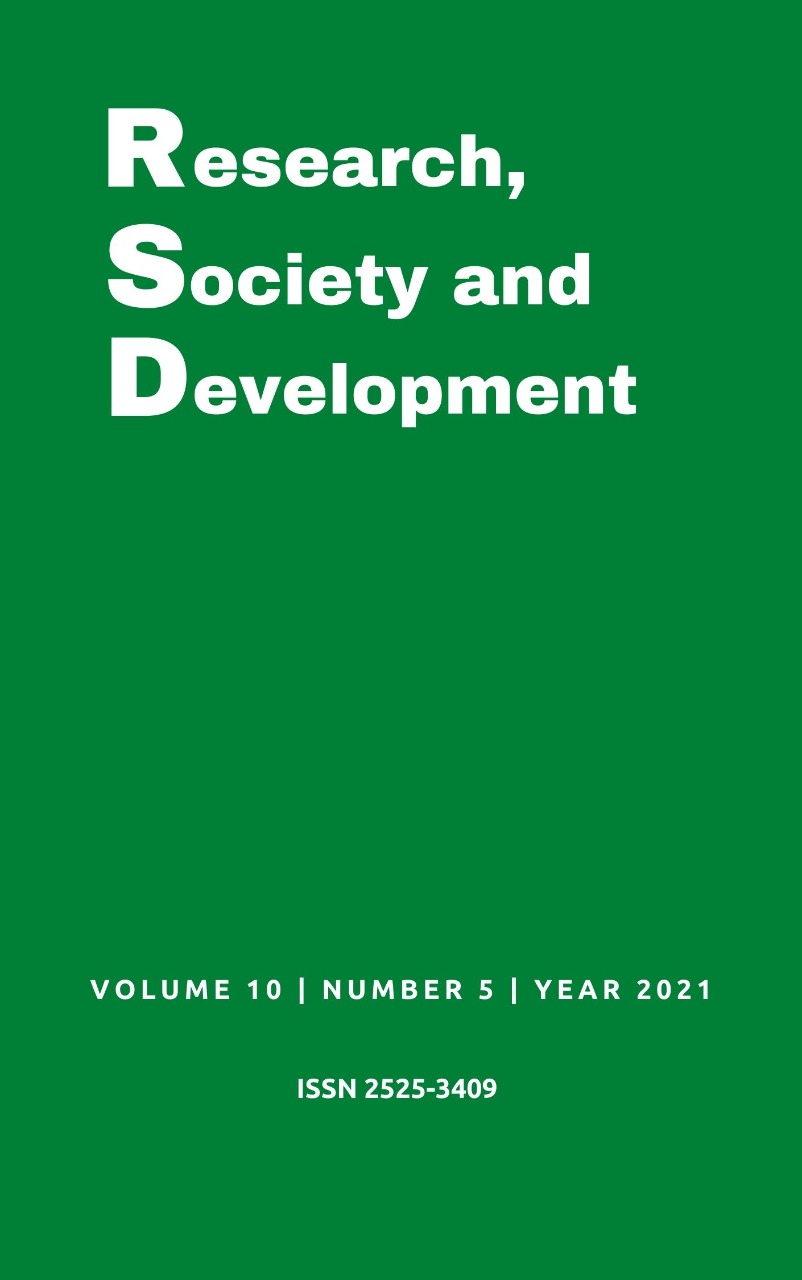Las escuelas del pueblo: Instituciones escolares de la Vila da Paz en Teresina (1980-1990)
DOI:
https://doi.org/10.33448/rsd-v10i5.15292Palabras clave:
Historia, Educacion, Memoria, Iglesia católica.Resumen
Este trabajo tiene como objetivo analizar el surgimiento de las instituciones educativas en el contexto histórico de la comunidad Vila da Paz, Teresina-PI, a través del análisis de la actuación socio-educativa de Pedro Balzi, un sacerdote que marcó su sacerdocio en acciones misioneras, entre las que destaca la construcción de escuelas. La investigación pretendía comprender cómo la implantación de los centros educativos contribuyó a las transformaciones que se produjeron en la Vila. Se identificó que la acción del clérigo, especialmente en el aspecto educativo, asumió una posición importante para la configuración histórica de la Villa. Situado en la zona sur de Teresina, el objeto se inserta en el recorte de 1980 a 1990, tomando como punto de partida de los análisis el contexto social de la capital en la década de los ochenta, marcado por ocupaciones irregulares en el tejido urbano. A partir de estos recortes, se verificó que el trabajo desarrollado por el padre Balzi, principalmente a través de la construcción de escuelas, se convirtió en el agente movilizador de las primeras acciones de urbanización en Vila da Paz, modificando el tejido urbano de la ciudad y la vida cotidiana de sus habitantes. En este camino, se buscó establecer interlocuciones con los escritos de Scott Mainwaring, Ana Fani Alessandri Carlos, Maurice Halbwachs, entre otros. Como lastre documental, la investigación se basó en fuentes bibliográficas y hemerográficas y en informes orales.
Referencias
Andreola, B. A. (2011). Por uma pedagogia das grandes urgências planetárias. Revista do Centro de Educação, 36 (2), 313-330.
Balzi, G, & Cariissoni, A. (Ogr.). (2013). Construtor de Amor: Padre Pedro Balzi. Halley.
Balzi, P. (2009). História da Paróquia Santuário Nossa Senhora da Paz: Gráfica do Povo.
Barcelar, O. I. B. (1980). Fluxos migratórios e crescimento urbano piauiense. Carta CEPRO. 6 (1) 25-36.
Barcelar, O. I. B. (1990). Causas e tendências do processo migratório piauiense. Fundação CEPRO.
Barros, A. R. N. (2018). Entrevista concedida a Karina Viana da Silva, nas instalações da Fundação Nossa Senhora da Paz. 09 out.
Brigas. (1987). O Dia. Recorte de jornal presente no acervo do Memorial padre Pedro Balzi.
Camargo, A. (1999). Como a História Oral chegou ao Brasil: entrevista com Aspásia Camargo por Maria Celina d’Araújo. História Oral. Revista da Associação Brasileira de História Oral. 2, 167-179.
Certeau, M. (2004). A invenção do cotidiano. 1. Artes de fazer, Vozes.
Carlos, A. F. A. (2007) O Espaço Urbano: novos escritos sobre a cidade. FFLCH.
Corrêa, R. L. (2004) O espaço Urbano. Ática.
Delgado, L. A. N. (199). História Oral: memória, tempo, identidade. (2a ed.), EDUSC.
Façanha, A. C. (2003). A evolução urbana de Teresina: passado, presente e... Carta CEPRO, 22(1), 59-69.
Fontineles, C. C. S. (2015). O Recinto do Elogio e da Crítica: maneiras de durar de Alberto Silva na memória e na história do Piauí. EDUFPI.
Fontineles, C. C. S., & Sousa Neto, M. (2017). Nasce Um Bairro Renasce A Esperança: história e memória de moradores do Conjunto Dirceu Arcoverde. Teresina: EDUFPI.
Halbwachs, M. (1990). A memória coletiva. Ed. Revista dos Tribunais Ltda.
Mainwaring, S. (2004). A Igreja Católica e a política no Brasil (1916-1985): trad. Heloisa Braz de Oliveira Prieto. Brasiliense. 2004.
Moradores da Vila (1987). Jornal da Manhã, 05 jul. p. 3.
Moradores da Vila (1991). O Dia, 02/03 jun. 02.
Sousa Neto, M., & Silva, K.V. (2019) A Cidade em Guerra: a Vila da Paz e sua história (Teresina, 1986-1990). Cadernos do Tempo Presente / UFS. 9, 63 - 80. https://doi.org/10.33662/ctp.v9i2.11170
Sousa Neto, M., & Fontineles, C. C. S. (2019). Para além das margens: o Conjunto Habitacional Itararé e as remodelações dos espaços urbanos em Teresina (década de 1970). História Oral. 22, 191-216. https://doi.org/10.51880/ho.v22i2.942
Descargas
Publicado
Número
Sección
Licencia
Derechos de autor 2021 Karina Viana da Silva; Marcelo de Sousa Neto

Esta obra está bajo una licencia internacional Creative Commons Atribución 4.0.
Los autores que publican en esta revista concuerdan con los siguientes términos:
1) Los autores mantienen los derechos de autor y conceden a la revista el derecho de primera publicación, con el trabajo simultáneamente licenciado bajo la Licencia Creative Commons Attribution que permite el compartir el trabajo con reconocimiento de la autoría y publicación inicial en esta revista.
2) Los autores tienen autorización para asumir contratos adicionales por separado, para distribución no exclusiva de la versión del trabajo publicada en esta revista (por ejemplo, publicar en repositorio institucional o como capítulo de libro), con reconocimiento de autoría y publicación inicial en esta revista.
3) Los autores tienen permiso y son estimulados a publicar y distribuir su trabajo en línea (por ejemplo, en repositorios institucionales o en su página personal) a cualquier punto antes o durante el proceso editorial, ya que esto puede generar cambios productivos, así como aumentar el impacto y la cita del trabajo publicado.


